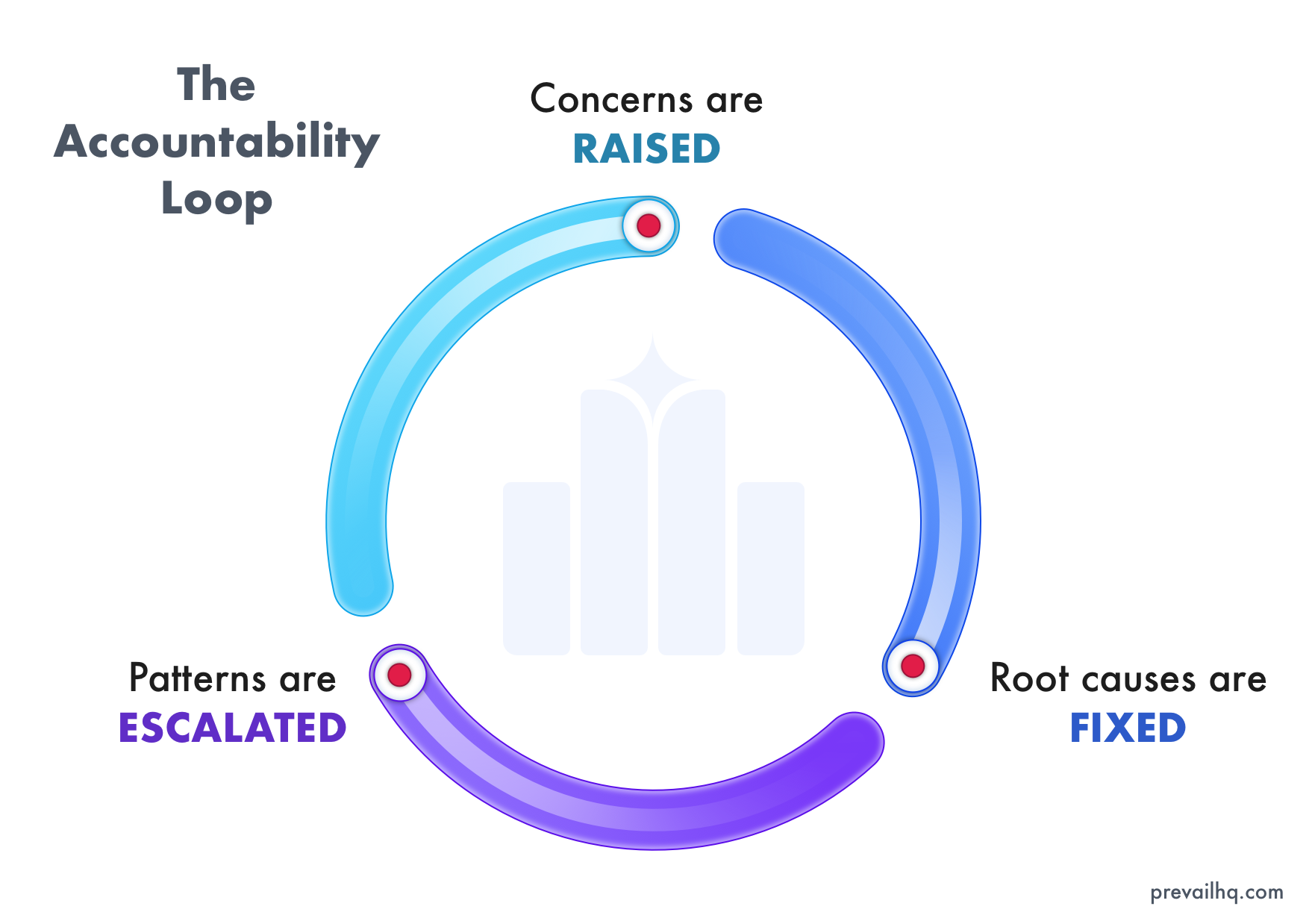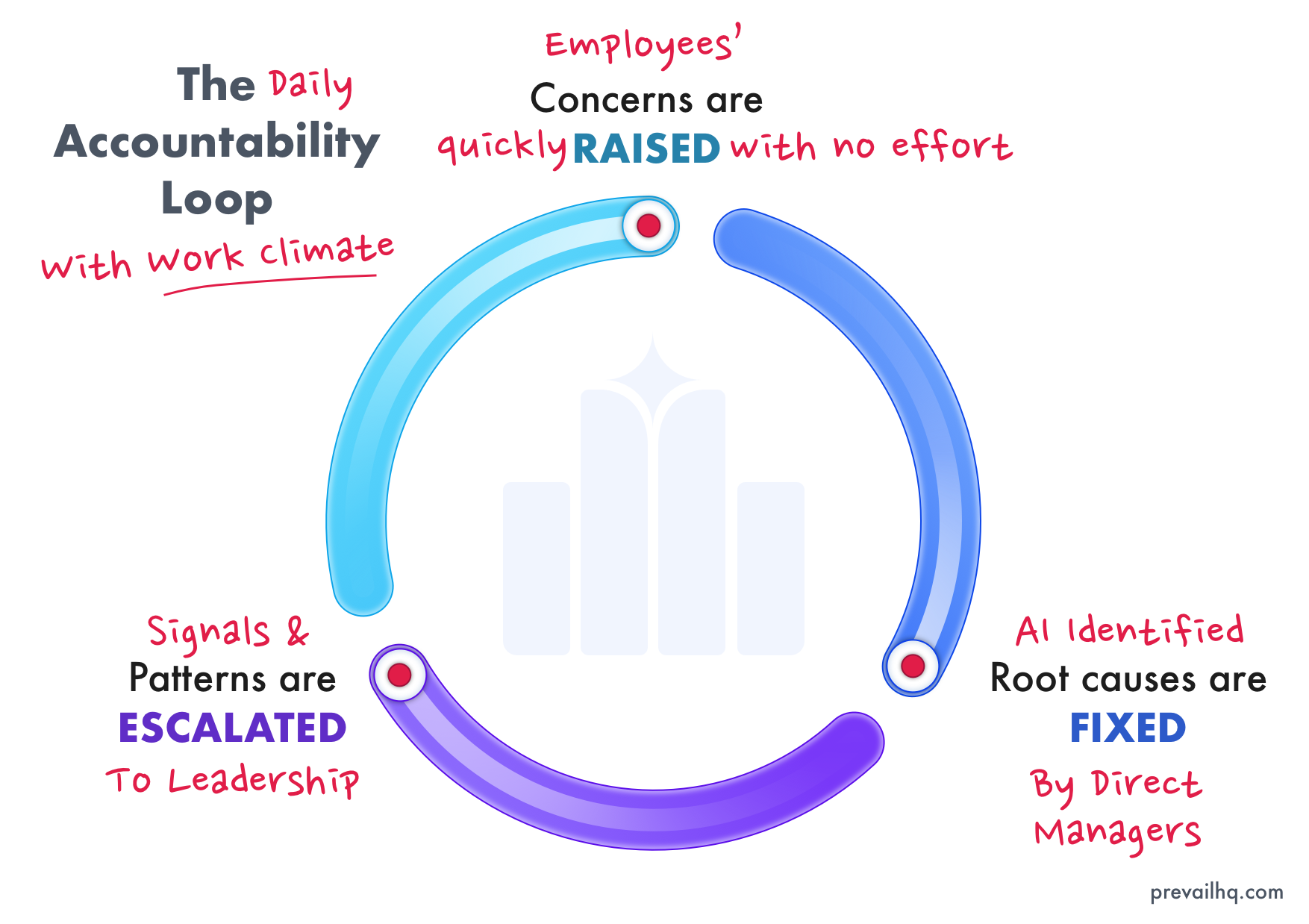
Why Every Company Needs an Accountability Loop
Most workplace crises—like burnout, missed deadlines, or turnover—don’t start huge. They begin as small, subtle problems that nobody addresses in time. Perhaps an employee feels overloaded but doesn’t mention it, or a minor communication gap grows until entire projects stall. It’s not that the issues are invisible—it’s that no system catches them early enough.
There is a process that solves this issues. Let's dig in.
What is an Accountability Loop?

It’s a simple, universal cycle that ensures concerns get flagged early, tackled swiftly, and reviewed for patterns so they don’t return. Think of it as a three-step process:
- Employees raise concerns the moment they sense something’s off (Employee-Driven).
- Managers act quickly—many times with a little AI assistance to pinpoint the root cause, but always with a human touch.
- Leaders keep an eye on the bigger picture, making sure no concern slips through the cracks or repeats across teams.
In essence, a well-structured Accountability Loop means no subtle whisper goes unheard, no manager is left guessing, and leadership be proactive rather than reactive.
Why It Matters
-
Tiny Issues Cause Big Costs
A single unspoken frustration—like confusion over responsibilities—can lead to delays, rework, or lost productivity. Worse, if employees feel ignored, they might quit, raising turnover expenses. An Accountability Loop prevents these silent crises by catching issues early.
-
Employees Feel Valued
Nothing boosts morale like knowing your concerns won’t vanish into a black hole. When employees see managers jump on their feedback and leaders backing them up, trust grows. A transparent, real-time loop fosters genuine engagement—not forced positivity.
-
Managers Save Time
Instead of playing detective when problems escalate, managers get immediate alerts. AI can help identify the real cause, cutting guesswork. This fast-lane approach frees managers to solve actual problems, not chase symptoms.
-
Leaders Stay Ahead of Trends
Repeated complaints about, say, poor communication in certain departments flag a systemic challenge. Leaders can address it once, at the root, before it grows into a widespread morale issue or an operational bottleneck.
What an Accountability Loop Looks Like
Imagine a scenario:
- Employee notices they’ve got conflicting tasks with unclear deadlines. Instead of bottling up frustration, they raise their hand immediately.
- Manager sees the alert, consults a quick AI breakdown (like, “Task priorities unclear, root cause: conflicting instructions from multiple leads”), then resolves the conflict with a quick clarification.
- Leader reviews if multiple employees face the same overload, ensuring this confusion doesn’t become widespread.
Simple. Human-focused. But highly effective.
Introducing Work Climate
So how do you put this loop into practice in your organization? That’s where Work Climate comes in. We’ve designed a quick, real-time approach that helps teams adopt an Accountability Loop with minimal overhead. Employees raise concerns right away, managers solve them fast (AI highlights the real cause), and leaders track patterns to prevent repeats.

Your Next Step: Get a Benchmark & Start the Loop
To see if your team already potential has “hot spots,” run a quick Benchmark—you’ll get an instant baseline on where friction might be lurking. It’s free, easy, and trains you as you go.
Remember, if you want to stop small problems from ballooning, you need a process that ensures employees can speak up, managers can fix issues quickly, and leaders can tackle deeper patterns. That’s what an Accountability Loop is—and * every* company should have one.
Ready to See If Your Team Has Hidden Hotspots?
Try a free Benchmark and discover any subtle whispers that might be draining time or money. Don’t let little problems become big crises—implement an Accountability Loop and keep your workforce aligned, confident, and ready for anything.